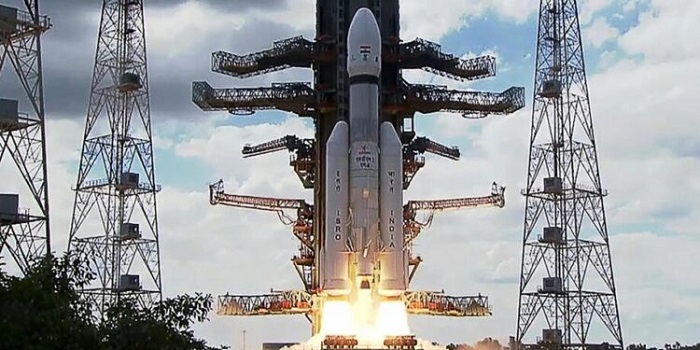India has become the first nation to successfully land a spacecraft on the Moon’s South Pole, after a Russian lunar probe recently crashed in the same region.
This groundbreaking attempt marks a monumental moment for the world’s most populous nation, as it steadily approaches and even surpasses milestones set by established space powers worldwide.
Dubbed “Chandrayaan-3,” meaning “Mooncraft” in Sanskrit, the spacecraft is scheduled to touch down shortly after 6:00 pm India time (1230 GMT) near the relatively unexplored southern pole of the Moon.
The front page of The Times of India on Wednesday proclaimed, “India reaches for the Moon,” with the hopeful lunar landing taking center stage in local news. Similarly, The Hindustan Times declared, “It’s D-Day for Moon Mission.”
The recent endeavor follows a previous Indian attempt in 2019, which unfortunately ended in failure. Notably, this new attempt emerges just days after Russia’s first Moon mission in nearly half a century, aimed at the same region, ended in a crash on the lunar surface.
However, the optimism remains high, with former Indian space chief K. Sivan expressing confidence in the mission’s success. He pointed to the positive signs from the latest photos transmitted by the lander, indicating a promising final phase of the voyage.
Sivan explained that lessons were learned from the failure four years ago, leading to necessary corrections. He affirmed that “Chandrayaan-3 is going to go with more ruggedness,” highlighting the team’s renewed confidence in the mission’s smooth execution.
Launched around six weeks ago amidst enthusiastic spectators, the mission’s journey to the Moon took longer compared to the expeditions of the Apollo era in the 1960s and 1970s, which reached the Moon in a matter of days. This is due to India’s use of less powerful rockets, necessitating multiple orbits around Earth to gain the required velocity before embarking on the month-long journey to the lunar destination.
The spacecraft’s lander named Vikram, detached from its propulsion module last week and has been actively sending back images of the lunar surface since entering lunar orbit on August 5.
As the landing day approached, the Indian Space Research Organisation (ISRO) assured the public through social media that the mission was progressing on schedule. The mission control complex was reported to be bustling with energy and excitement, with the agency affirming the continued smooth progress.
India’s aerospace program operates on a relatively modest budget but has exhibited substantial growth since its first lunar probe successfully orbited the Moon in 2008. With a price tag of $74.6 million, the Chandrayaan-3 mission stands as a testament to India’s efficient and cost-effective space engineering approach, setting it apart from other nations.
Experts attribute India’s ability to keep costs low to its strategy of adapting existing space technology and leveraging a pool of highly skilled engineers whose wages are notably lower than their foreign counterparts.
In 2014, India achieved another significant milestone by becoming the first Asian nation to place a satellite into orbit around Mars. The country is also gearing up for a three-day manned mission in Earth’s orbit, scheduled for launch next year.
Sivan emphasized the crucial nature of India’s exploration of the relatively uncharted lunar south pole, noting its substantial contribution to scientific knowledge. Prior to this, only Russia, the United States, and China had achieved controlled landings on the lunar surface.
Russia, a notable player in lunar exploration, recently launched its own lunar probe, its first in almost fifty years. While it aimed to beat Chandrayaan-3 to become the first nation to achieve a controlled landing around the lunar south pole, its Luna-25 probe faced an unfortunate crash landing during descent.
Russia’s space industry has faced challenges due to sanctions linked to the Ukraine conflict, coupled with issues of corruption, a lack of innovation, and limited partnerships


Comment here